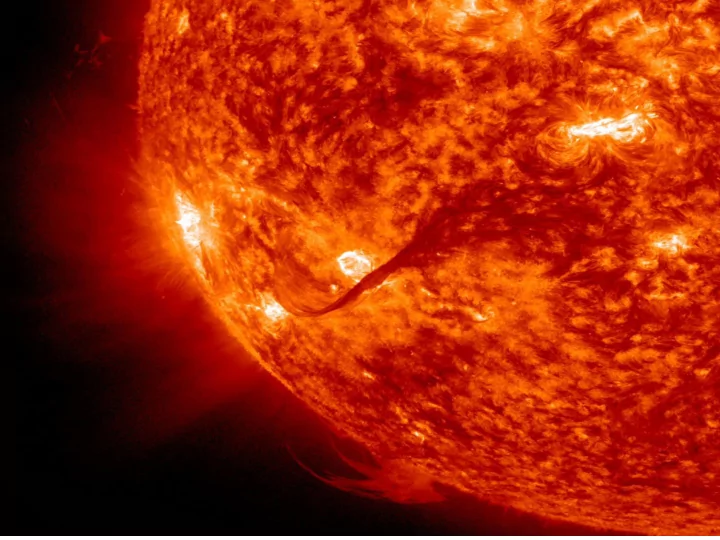

michele piana dipartimento di matematica, universita ’ di genova cnr – spin, genova
first question why so many space instruments since we may have telescopes on earth?
atmospheric blurring if you want to get rid of atmospheric blurring you need (a sophisticated, not always completely reliable, computationally consuming) math or: go into space!!
second question why do we need so many satellites to look at the sun?
the electromagnetic spectrum • low wavelength = high frequency = high energy • the sun emits at all possible wavelengths (both at rest and in full activity)
wavelengths and hardware • the relation between wavelength and energy impacts on the design of hardware detectors: there is no hardware for all seasons • the design of hardware detectors impacts on the nature of captured data: there is no data for all seasons
example 1 – hard X-rays
RHESSI and STIX in SO
Grid Pattern
FAST SLOW SLOW SLOW 16 FAST
FAST SLOW SLOW SLOW 16 FAST
FAST SLOW SLOW SLOW 12 16 FAST
from modulations to images
example 2 – extreme ultraviolet (EUV)
SDO/AIA
saturation • EUV data are �olle�ted �y pretty standard CCDs (it’s like having a gigantic and giganticly effective digital camera) • intense phenomena saturate the CCD
de-saturation
third question why do we need to look at the sun at so many different wavelengths?
the standard model of flares • (maybe) magnetic reconnection high in the corona • if the density is high: coronal emission: X-rays • loop-top source: hard X-rays • gyro-sinchrotron radiation along magnetic field lines: radio • thick-target foot-points: hard X-rays • plasma heating: EUV
fourth question why are flares so interesting?
science-based answer 1 • magnetic reconnection has never been observed • no way so far to understand the acceleration mechanism in the loop • the thick-target model is still under construction • the released energy predicted by the models is systematically smaller than the energy measured by the instruments
science-based answer 2 the mechanism why flares trigger coronal mass ejections and solar wind is still not explained
society-oriented answer 2003, october 23: a huge amount of coronal mass was ejected toward the earth at a speed of around 8 million km per hour: • in sweden, strong induced currents provoked power grid black-outs • in USA, all flight travelling along polar routes were cancelled • on orbit, the ISS astronauts took shelter behind protective shields • everywhere at high latitudes, GPS malfunctions occured
a new terminology... is on the way...: active regions space weather solar sunspots flare forecasting solar flares solar storms solar energetic particles (SEPs) geomagnetic storms coronal mass ejections (CMEs) NOAA SWPC solar wind SDO/HMO a new science/practice: space weather
...with notable societal impacts in the 21 st century, we have become more vulnerable due to the technologies our societies depend on should a very strong solar storm hit the Earth, it may not only cause damage to space-based technology but also to communication systems, transportation networks, pipelines, and power grids on earth.
FLARECAST: a service for solar flare forecasting to identify the properties of the solar atmosphere that play the role of predictors for solar flares to construct a prediction service analogous to the one provided by national weather forecasting agencies to make these predictions reliable, accessible, at low cost, real-time
space weather service ingredient 1: properties ingredient 2: machine learning ingredient 3: technological platform
ingredient 1: properties • data providing information on solar active regions (mainly: magnetic field, topography of the sunspots) • pattern recognition methods able to extract properties from data • property database
ingredient 2: artificial intelligence (AI) AI: two possible approaches: • supervised learning: a set of historical data are at disposal where features are tagged by means of labels representing the observation outcome, and the prediction task consists in determining the label associated to the incoming features' set • unsupervised learning: no training set is used, while data are clustered in different groups according to similarity criteria involving data features. the importance of feature selection
ingredient 3: technological platform passwords: automation; big data; cloud; open access
two dreams 1. understanding the physics of solar flares: 2. forecasting flares in the same way as thunderstorms are forecasted
Recommend
More recommend